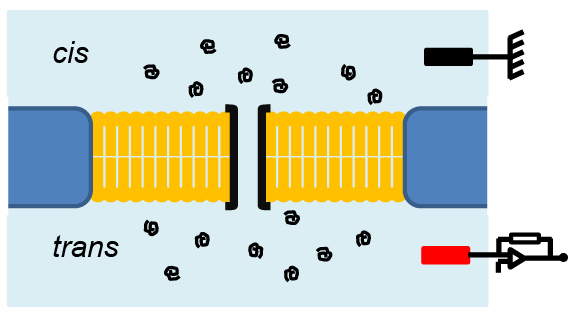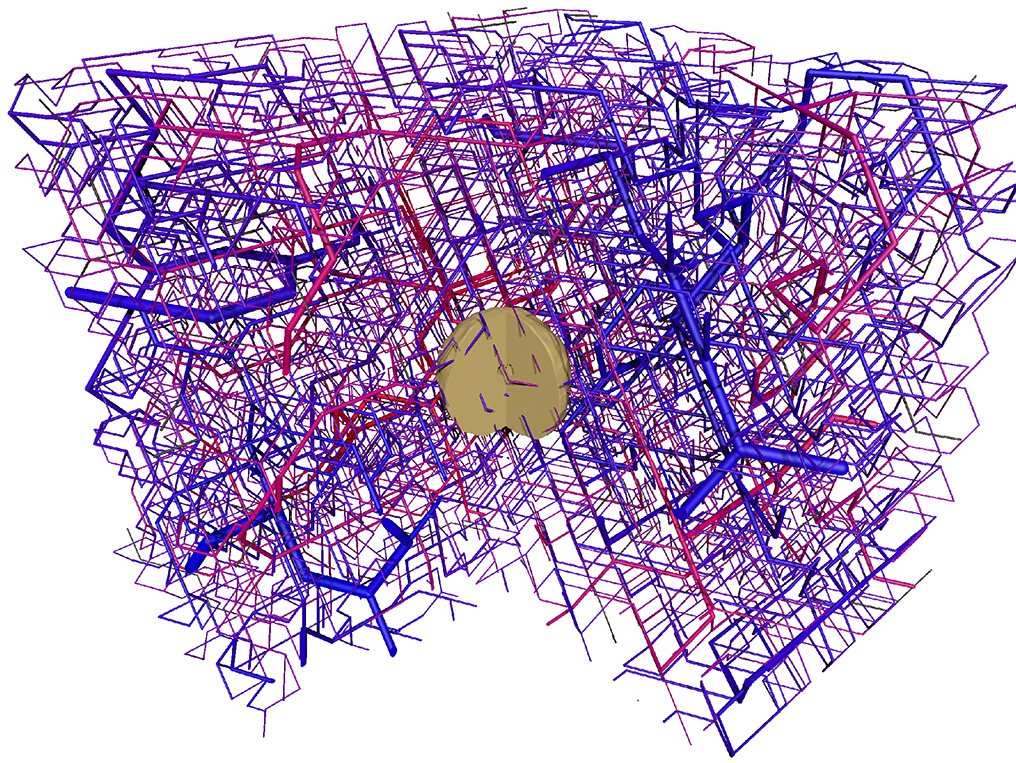News
EPJ H Highlight - From a model of fluids to the birth to a new field in computational physics
- Details
- Published on 16 May 2018

Revisiting the roots of a physics field known as computational statistical mechanics
It may sound like the stuff of fairy tales, but in the 1950s two numerical models initially developed as a pet project by physicists led to the birth of an entirely new field of physics: computational statistical mechanics. This story has recently appeared in a paper published in EPJ H, authored by Michel Mareschal, an Emeritus Professor of Physics at the Free University of Brussels, Belgium. The article outlines the long journey leading to the acceptance of such models - namely Monte Carlo and Molecular Dynamics simulations - as reliable evidence for describing matter. This happened at a time when the computing power required to run simulations was scarce. Today, these techniques are used by thousands of researchers to model the behaviour of materials, in contexts ranging from fusion to biological systems.
EPJ D Colloquium - Experimental progress in positronium laser physics
- Details
- Published on 15 May 2018

The field of experimental positronium physics has advanced significantly in the last few decades, with new areas of research driven by the development of techniques for trapping and manipulating positrons using Surko-type buffer gas traps. Large numbers of positrons (typically ≥106) accumulated in such a device may be ejected all at once, so as to generate an intense pulse.
EPJ E Highlight - Remote control of transport through nanopores
- Details
- Published on 14 May 2018

New study outlines key factors affecting the transfer of molecules through biological channels
In our bodies, the transfer of genetic information, viral infections and protein trafficking, as well as the synthesis and the degradation of biomolecules, are all phenomena that require the transport of molecules through channels. Improving our control of these channels and the capacity of molecules to get across could have many potential applications in the fields of energy, biotechnology and medicine. These include ultra-fast DNA sequencing, detection of biological markers used in disease diagnostics, protein folding, high-resolution determination of the size of biological molecules or even the control of ion or biomolecule transport through the protein sensor. In a new study published in EPJ E, Manuela Pastoriza-Gallego from the University Paris-Seine, France, and colleagues have shown how to alter external factors, such as external voltage, to control the transport of a dextran sulfate molecule - a polyelectrolyte - through the nanopores of the aerolysin protein channel.
EPJD Highlight - Antimatter study to benefit from recipe for ten-fold spatial compression of plasma
- Details
- Published on 03 May 2018

Improving the spatial compression of a mixed matter-antimatter trapped plasma brings us one step closer to grasping the acceleration of antimatter due to Earth’s gravity
An international team of physicists studying antimatter have now derived an improved way of spatially compressing a state of matter called non-neutral plasma, which is made up of a type of antimatter particles, called antiprotons, trapped together with matter particles, like electrons.
EPJE Highlight - Tumorcode, a software to simulate vascularized tumors
- Details
- Published on 27 April 2018

An open source software that is able to construct synthetic blood vessel networks in 3D, matching the properties observed in real tumor samples.
The tumor vasculature is a major target of anticancer therapies. Rieger, Fredrich and Welter at Saarland University, Germany have been pursuing a quantitative analysis of the physical determinants of vascularized tumors for several years [1]. With the help of computer simulations they have been able to recapitulate the knowledge accrued from in vitro research of tumor spheroids, animal models and clinical studies and have re-created a vascularized tumor system in silico.
EPJ Data Science Highlight - Academic performance and behavioral patterns
- Details
- Published on 27 April 2018

In an article just published in EPJ Data Science, Valentin Kassarnig, Sune Lehmann and Andreas Bjerre-Nielsen look into smartphone data of undergraduate students to assess factors influencing social behavior and educational performance.
(Guest post by Valentin Kassarnig, Sune Lehmann & Andreas Bjerre-Nielsen, originally published on the SpringerOpen blog)
EPJ B Highlight - Turning graphene into light nanosensors
- Details
- Published on 25 April 2018

Tuning the graphene embedded in a photonic crystal by varying the external temperature can transform it into a light-sensitive sensor
Graphene has many properties; it is e.g. an extremely good conductor. But it does not absorb light very well. To remedy this limiting aspect of what is an otherwise amazing material, physicists resort to embedding a sheet of graphene in a flat photonic crystal, which is excellent for controlling the flow of light. The combination endows graphene with substantially enhanced light-absorbing capabilities. In a new study published in EPJ B, Arezou Rashidi and Abdolrahman Namdar from the University of Tabriz, Iran demonstrate that, by altering the temperature in such a hybrid cavity structure, they can tune its capacity for optical absorption. They explain that it is the thermal expansion and thermo-optical effects which give the graphene these optical characteristics. Potential applications include light sensors, ultra-fast lasers, and systems capable of modulating incoming optical beams.
EPJ Data Science Highlight - Discovering temporal regularities in retail customers’ shopping behaviour
- Details
- Published on 18 April 2018

Why do we buy certain items when we buy them? A new study published in EPJ Data Science analyzes personal retail data to extract a temporal purchasing profile, which is able to summarize whether and when a customer makes a purchase. Its results show that certain patterns and types of shoppers are detectable, which can be used both by customers to enable personalized services, and by the retail market chain for providing offers and discounts tailored to the individual shoppers personal temporal profile.
(Guest post by Riccardo Guidotti and Anna Monreale, originally published on the SpringerOpen blog)
EPJ H Highlight - Once upon a time, an exoplanet was discovered
- Details
- Published on 16 April 2018

Personal recollections of an astrophysicist shed new light on the 1995 discovery on 51 Pegasi b
In recent history, a very important achievement was the discovery, in 1995, of 51 Pegasi b, the first extrasolar planet ever found around a normal star other than the Sun. In a paper published in EPJ H, Davide Cenadelli from the Aosta Valley Astronomical Observatory (Italy) interviews Michel Mayor from Geneva Observatory (Switzerland) about his personal recollections of discovering this exoplanet. They discuss how the development of better telescopes made the discovery possible. They also delve into how this discovery contributed to shaping a new community of scholars pursuing this new field of research. In closing, they reflect upon the cultural importance that the 51 Pegasi b discovery had in terms of changing our view of the cosmos.
EPJ Data Science Highlight – The science behind what makes a bestselling book
- Details
- Published on 10 April 2018

Books that are fiction, thrillers or mysteries, have high initial sales numbers and are released around Christmas are more likely to be bestsellers, according to a study published in EPJ Data Science
(This post was originally published on the SpringerOpen blog)
A team of researchers from Northeastern University, Boston, used a big data approach to investigate what makes a book successful. By evaluating data from the New York Times Bestseller Lists from 2008 to 2016, they developed a formula to predict if a book would be a bestseller.




